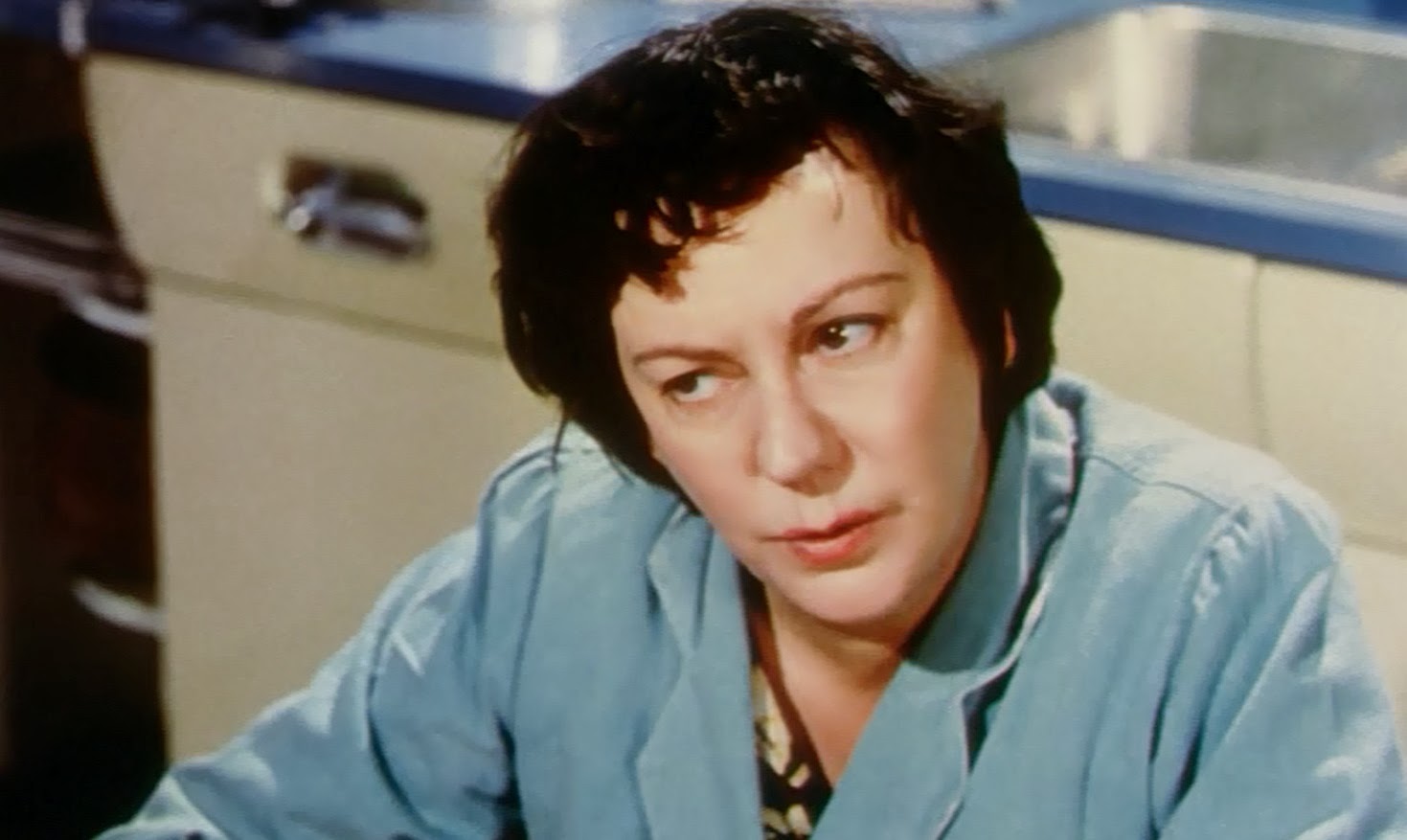The Feminine Touch (1956)
"You will be addressed as 'Nurse'.
Do it honour as it is an honourable title."
Sometimes you get a chance to see a long-ignored film and are surprised that it has been overlooked by both historians and enthusiasts: I'm afraid this isn't one of them.
Re-released in Volume 8 of the rather splendid Ealing Rarities Collection, The Feminine Touch is a slow, not very dramatic and, frankly, quite dull tale of student nurses at a training hospital in the 1950s. At times it views as a training film that might have been used to encourage girls to consider nursing by exposing them to both the glamour (two of the trainees marry doctors) and the strains of nursing.
Whilst a film like 1944's The Lamp Still Burns confronted the issue of whether nurses should be allowed to marry amidst a dramatic format with well-rounded characters, The Feminine Touch all seems rather one dimensional:
There's the glamorous but trustworthy one, Nurse Richards (Belinda Lee) ...
 |
| Belinda Lee |
... the wealthy but cynical one, Nurse martin (Delphi Lawrence), who plans from day one to marry a doctor ...
 |
| Delphi Lawrence |
... the 'jolly hockey sticks' girl who takes it all very seriously, Nurse Bowland (Henryetta Edwards) ...
 |
| Henryetta Edwards |
... the Irish innocent, Nurse O'Brien (Adrienne Corri) and the inevitable cockney Nurse Jenkins (Barbara Archer) ...
 |
| Henryetta Edwards, Belinda Lee, Delphi Lawrence, Adrienne Corri and Barbara Archer |
... throw in a couple of handsome doctors, George Baker and Christopher Rhodes ...
 |
| George Baker |
 |
| Christopher Rhodes |
... and some regulation severe senior nurses, Matron (Diana Wynard) and Sister Snow (Beatrice Varley) ...
 |
| Diana Wynard |
 |
| Beatrice Varley |
... and a lazy cockney kitchen-hand (Dandy Nichols) ...
 |
| Dandy Nichols |
... and you have standard hospital drama fare.
At times, the viewer appears lost as to what to make of the film: the conflict between the severity of the system (with the nurses working long hours for little return and doing all the most menial tasks) and the necessity for discipline, as explained to them by Matron in a pair of lengthy lectures which appear to be straight from a training manual.
In the apparent confusion between being a drama or being a training-film, it appears that someone suddenly thought 'Hang on a moment - let's liven things up for the audience. Inject a bit of glamour.' So the audience gets treated to the sight of the girls undressing:
 |
| Adrienne Corri, Belinda Lee and Delphi Lawrence |
 |
| Delphi Lawrence |
It doesn't work: even the sight of five young actresses getting in and out of nurses uniforms didn't lure an audience in the 1950s. And it doesn't work now.
Not that the film is without worth ...
... it's just that the director should have left the stocking tops to the Carry Ons and St Trinians of this world and instead concentrated on the serious issues of the challenges faced by those thrown into a world of sickness, misery and death - such as the scenes set in the children's ward. In a hard-hitting scene, a young patient (Jessie played by Mandy Miller) - an orphan whose heart condition appears to be terminal - challenges the religious faith under which the hospital and its staff publicly operate:
 |
| Mandy Miller |
"Why does God have to do this? He shouldn't have to do this, but he does. He's a bully, he's cruel and beastly."
After sitting through this film, I shared her sentiments.
If you really want to watch a film confronting the issue of conflict between a nurse's right to a private life and her need to be dedicated to the profession, I would rather recommend The Lamp Still Burns.
But don't let me put you off from buying the DVD since it contains There Ain't No Justice one of the most interesting pre-war Ealing films.
A number of posters from the film are currently available from memorabilia dealer Greg Edwards, including this one:
A number of posters from the film are currently available from memorabilia dealer Greg Edwards, including this one:


No comments:
Post a Comment